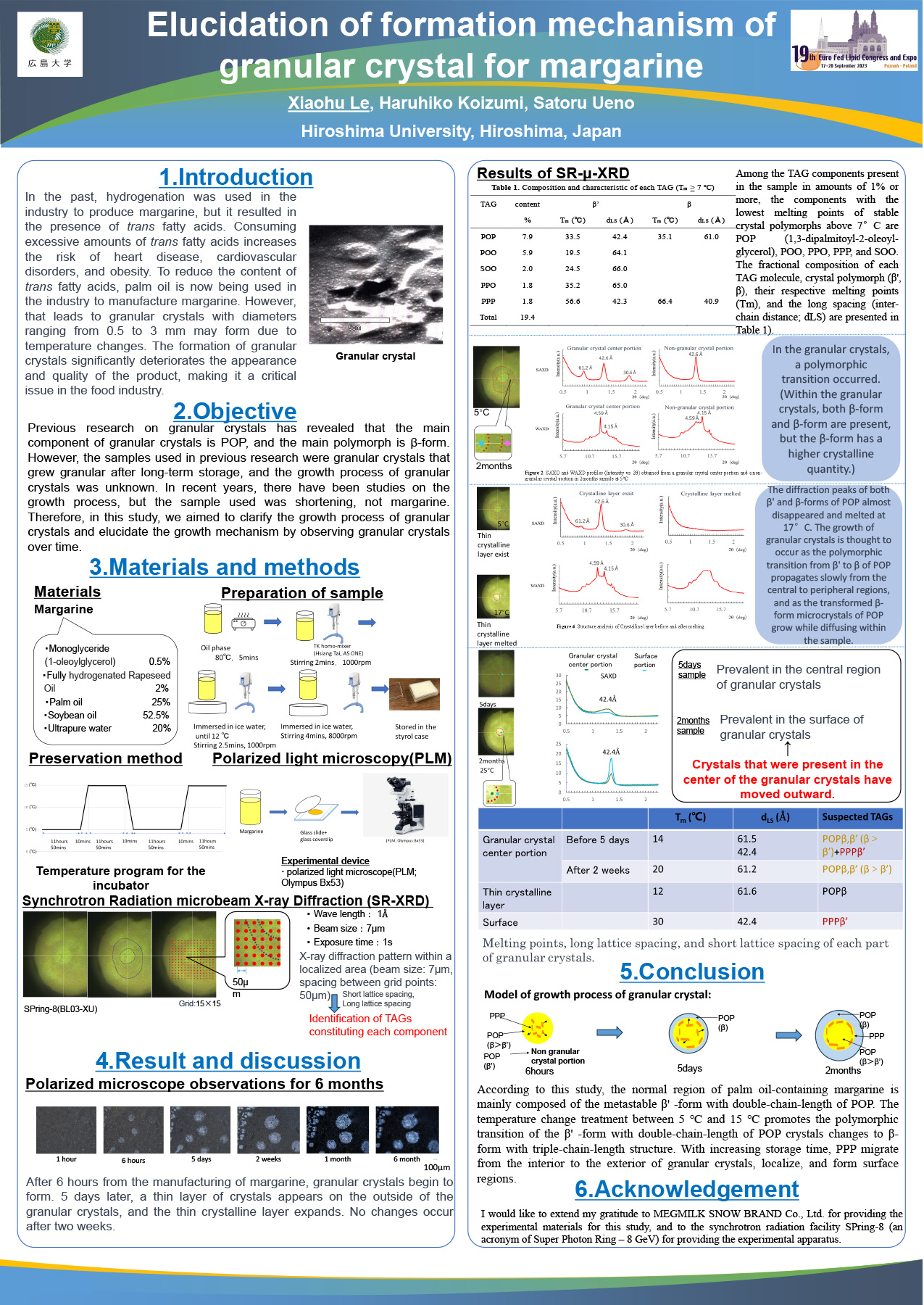In the past, hydrogenation was used in the industry to produce margarine, but it resulted in the presence of trans fatty acids. Consuming excessive amounts of trans fatty acids increases the risk of heart disease, cardiovascular disorders, and obesity. To reduce the content of trans fatty acids, palm oil is now being used in the industry to manufacture margarine. However, that leads to granular crystals with diameters ranging from 0.5 to 3 mm may form due to temperature changes. The formation of granular crystals significantly deteriorates the appearance and quality of the product, making it a critical issue in the food industry. The objective of this study is to investigate the mechanism behind the formation of granular crystals in margarine that contains palm oil. Margarine samples were emulsified using a TK homo-mixer at a speed of 1000rpm. After emulsification, rapid cooling and kneading were performed. Then samples were placed in an incubator with temperature programs set at 5°C/12 hours and 15°C /12 hours to facilitate the growth of granular crystals. To comprehend the growth process of granular crystal formation, the growth process of granular crystals were observed at 7°C using a polarized light microscope. Differential scanning calorimetry (DSC) was used to determine the changes in phase transition temperature and enthalpy resulting from the growth of granular crystals. In order to investigate the changes in the local composition of granular crystals during the storage period, local structural analysis was performed on thin film samples with different storage durations. The measurements were carried out using the synchrotron radiation microbeam X-ray diffraction apparatus.
Polarized light microscopy results showed that granular crystal was formed after 6 hours. From the fifth day on, the crystal layer with lower brightness formed around the granular crystal, and that crystal layer was expanding. Upon examining the triacylglycerols (TAGs) constituting the granular crystals, it was revealed that the core region of long-term stored granular crystals primarily consisted of POP, with the β-form being dominant, and also contained PPP. During the storage period, a polymorphic transition occurred from the β’-form of POP with double-chain-length structure to the β-form with triple-chain-length structure. It was also observed that the crystals grew outward from the center.
